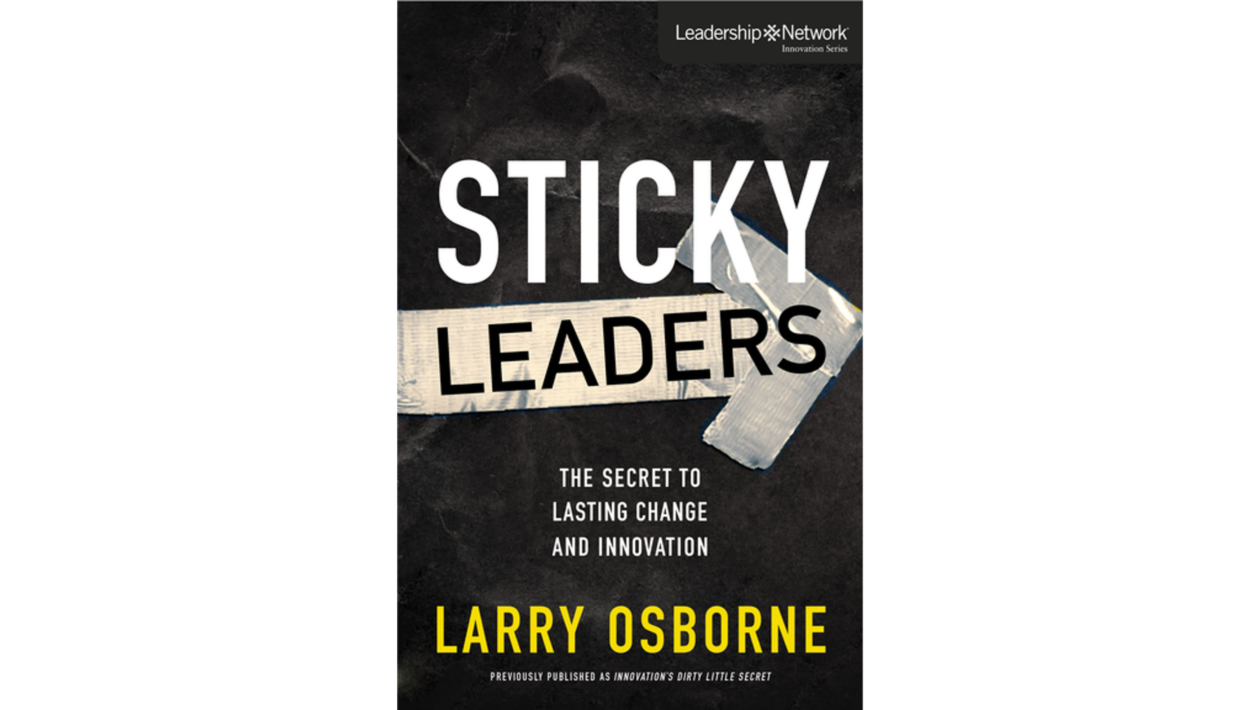By Larry Osborne
Grand Rapids, MI: Zondervan (2016)
Paperback version, 173 pages
Reviewed by SHAWNA CAMPBELL
Respected pastor and author, Larry Osborne, has contributed to the guidance of developing leaders who can use change to alter what has previously been done. Innovation produces something new, something that has never been done. Osborne states, “Both have one common thread: the more that they’re needed, the more they will be fiercely resisted” (loc. 17). This explains why two of the most challenging exercises in leadership are successfully directing the change process and introducing innovation. Osborne stresses that with any new venture, failure is inevitable and the surest result. This is called a “dirty little secret” in leadership, but once it is understood, it can bring both stability and creativity to organizations, especially with leadership that focuses on innovation, creativity, and problem-solving.
The strongest takeaway from Osborne is how relevant the book is to current ministry. For an idea to work, innovation and positive change must be able to work in the real world and be accepted by the organization or church in which it is being implemented. That is useful because both seem equally important as we all strive to make a difference. The secret to becoming an innovative and creative church is found in the right kinds of ideas, and launching the right types of products, programs, and initiatives. A church in need of renewal will have constant change that feels a little like whiplash.
Osborne writes about the evolution of a deeply held tradition. Every church has something that needs to be revised, or the purpose needs to be re-evaluated, but change is slow in coming because of deep-seated tradition that members cannot let go. “Dysfunctional structures will run any organization into the proverbial wall. And if something isn’t done to change them, the organization will inevitably shrink to a size that perfectly fits its policies, procedures, and structure” (loc. 129). How true this is of churches!
The book gave four essential points to take away that will contribute to the way leadership happens. First, innovation must be flexible and widely accepted. Osborne introduces the concept of “serial innovators”–leaders who try new things, think outside the box, and take careful, calculated risks. He says, “Healthy organizations . . . can’t just focus on the past. They must also think about creating the future . . .” (loc. 30). If a “better” solution isn’t widely adopted, it’s an invention, but not an innovation. Some churches encourage innovation, while others kill it.
The second point is about leadership. Leaders cannot avoid failing, but good leaders keep mistakes from becoming fatal. This is sound advice for every pastor! The key to this is to “plan in pencil” or be flexible. Leaders should guide principles instead of rigid policies. As was discussed, coercion in absolutes does not work.
The third takeaway is the difference between mission and vision. A mission statement explains why a church exists. A vision statement is a narrative that describes how success is supposed to appear. Having a clear mission statement without a detailed vision will destroy a team, just like having a complete vision without a thorough mission statement leads to lots of activity with no way to measure success.
The fourth point is breaking through the barriers that every pastor needs to ask about their ministry. Osborne encourages three questions: What? When? And how? “What” refers to a great idea; “when” is about the correct timing, and “how” consists of proper execution. What happens when great effort, thorough efficiency, and exceptional quality don’t cut it? In other words, what happens when you “hit the wall?” (loc. 121).
Osborne emphasizes that failure is the norm for innovation. This doesn’t exactly encourage a leader to rush into trying new things. The difference between innovation, invention, and trying new things is emphasized and encouraged. The start of the book can take a reader by surprise, though. It sure seems a blow to creativity! Not all ideas are easy to accept; for example, “when it comes to growth, change, and innovation, there’s not much difference between a church, a community organization, and a car dealership. The landmines, roadblocks, and paths to success are remarkably similar” (loc. 25). To compare the various organizations together doesn’t appear like the growth would be relevant to all. Also, Osborne could have written a chapter on combining innovation with faith that would be helpful for ministry leaders. A question asked is this: when do we allow God to step in and take over our limited human endeavors?
An application takeaway from Sticky Leaders is that the most significant legacy a pastor can leave their church will not be found in the changes and innovations that have his or her name on them. It will be found in the corporate culture that is left behind.
I would highly recommend the book Sticky Leaders to all pastors in God’s work of ministry because it gave insight for making change within our current culture. As I contemplate the reading of Sticky Leaders, I realize the importance of creating a legacy that encourages continual change and innovation to the pastor, who fills the role of ministering to others. From a leader’s perspective, I can commit to creating a climate of innovation with an openness to change, so the leaders coming after me can stand on my shoulders and continue making a difference.
SHAWNA CAMPBELL is the associate pastor for Children’s Ministry at the Loma Linda University Church in Loma Linda, California.

